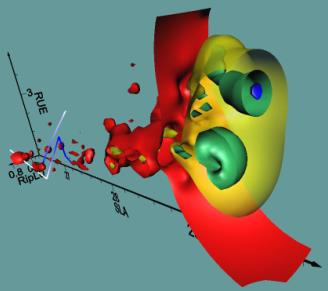A taxonomy-based approach to shed light on the babel of mathematical models for rice simulations.
 |
2016 - Environmental Modelling & Software, 85, 332-341 |
 |
Confalonieri, R., Bregaglio, S., Adam, M., Ruget, F., Li, T., Hasegawa, T., Yin, X., Zhu, Y., Boote, K., Buis, S., Fumoto, T., Gaydon, D., Lafarge, T., Marcaida, M., Nakagawa, H., Ruane, A.C., Singh, B., Singh, U., Tang, L., Tao, F., Fugice, J., Yoshida, H., Zhang, Z., Wilson, L.T., Baker, J., Yang, Y., Masutomi, Y., Wallach, D., Acutis, M., Bouman, B. |
Abstract:
For most biophysical domains, differences in model structures are seldom quantified. Here, we used a
taxonomy-based approach to characterise thirteen rice models. Classification keys and binary attributes
for each key were identified, and models were categorised into five clusters using a binary similarity
measure and the unweighted pair-group method with arithmetic mean. Principal component analysis
was performed on model outputs at four sites. Results indicated that (i) differences in structure often
resulted in similar predictions and (ii) similar structures can lead to large differences in model outputs.
User subjectivity during calibration may have hidden expected relationships between model structure
and behaviour. This explanation, if confirmed, highlights the need for shared protocols to reduce the
degrees of freedom during calibration, and to limit, in turn, the risk that user subjectivity influences
model performance.
taxonomy-based approach to characterise thirteen rice models. Classification keys and binary attributes
for each key were identified, and models were categorised into five clusters using a binary similarity
measure and the unweighted pair-group method with arithmetic mean. Principal component analysis
was performed on model outputs at four sites. Results indicated that (i) differences in structure often
resulted in similar predictions and (ii) similar structures can lead to large differences in model outputs.
User subjectivity during calibration may have hidden expected relationships between model structure
and behaviour. This explanation, if confirmed, highlights the need for shared protocols to reduce the
degrees of freedom during calibration, and to limit, in turn, the risk that user subjectivity influences
model performance.
 |
Keywords: Model classification, model parameterization, model ensemble, model structure, rice, uncertainty |
 |
DOI: 10.1016/j.envsoft.2016.09.007 |
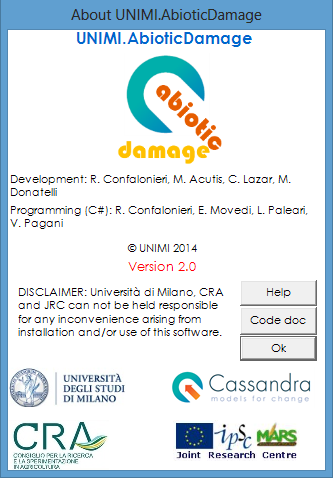 |
AbioticDamage A software component for the impact of abiotic damages on crop productions |
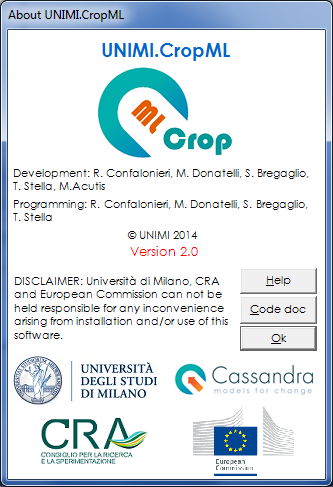 |
CropML CropML is a framework-independent component implementing a variety of approaches for crop growth |
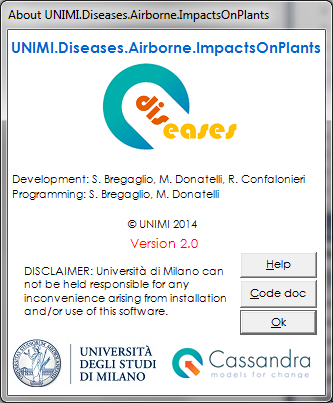 |
Diseases A software component to simulate plant-pathogen interactions |
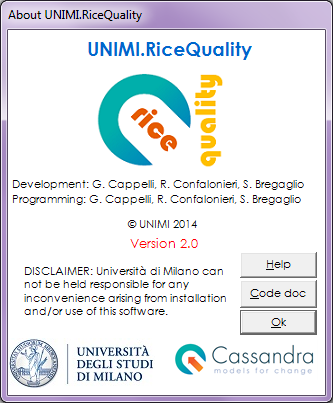 |
RiceQuality A software library to simulate different rice quality variables |
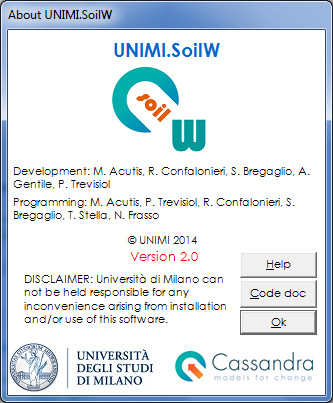 |
SoilW A software library implementing different approaches for soil hydrology simulation |
- Comparison of three calibration methods for modeling rice phenology
- A simple pipeline for the assessment of legacy soil datasets: An example and test with soil organic carbon from a highly variable area.
- A high-resolution, integrated system for rice yield forecasting at district level.
- Downscaling rice yield simulation at sub-field scale using remotely sensed LAI data.
- Analysis and modelling of processes involved with salt tolerance and rice.
- Estimating crop nutritional status using smart apps to support nitrogen fertilization. A case study on paddy rice.
- Development of generic crop models for simulation of multi-species plant communities in mown grasslands.
- Quantifying uncertainty due to stochastic weather generators in climate change impact studies
- Predicting rice blast disease: machine learning versus process-based models
- Boundaries and perspectives from a multi-model study on rice grain quality in Northern Italy.




